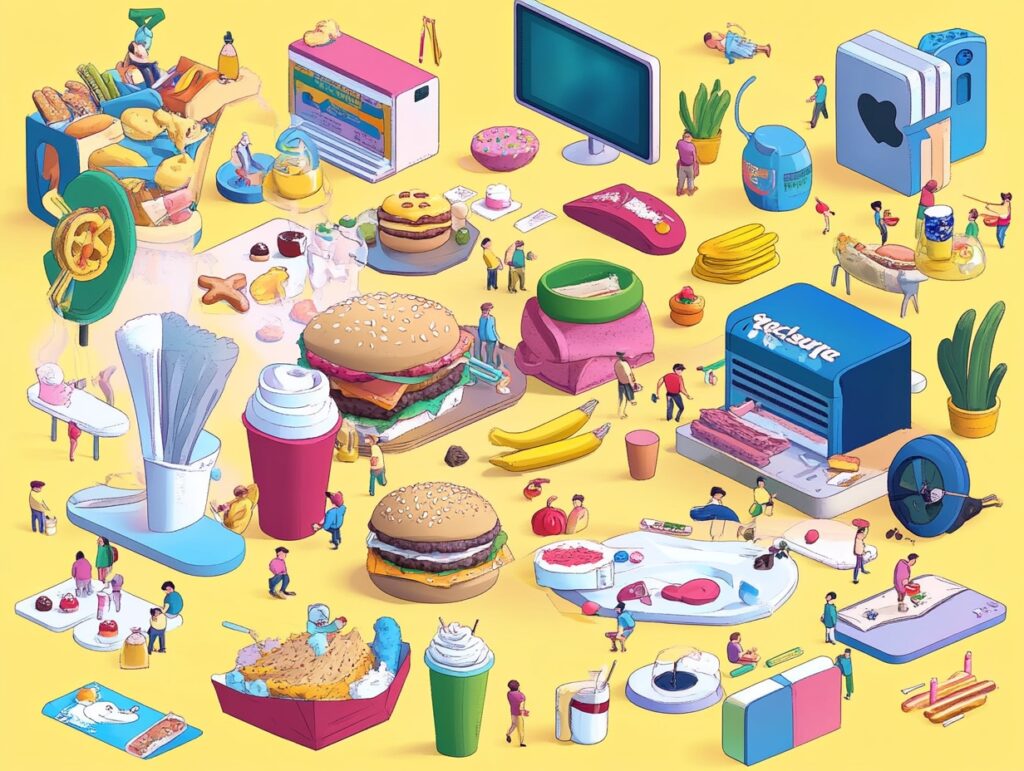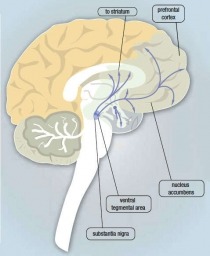Have you ever wondered if dopamine addiction could be affecting your ability to focus, manage emotions, or find joy in everyday life? In today’s overstimulated world, the relentless pursuit of dopamine might be driving more than just distraction—it could be leading to anxiety, drug abuse, and alcohol addiction. This constant flood of stimulation isn’t just numbing your senses; it’s creating deeper dependencies. Gaining insight into how dopamine shapes these behaviors could be essential for navigating the complex challenges of addiction.
What is Dopamine?
To understand dopamine addiction, it’s crucial to understand dopamine. Dubbed the “Kim Kardashian of molecules” by British clinical psychologist Vaughan Bell, dopamine is often referred to as the “feel-good” hormone. It’s a buzzword in pop culture, appearing in song lyrics, trends like “dopamine dressing,” and even inspiring molecular tattoo designs.However, dopamine doesn’t directly provide pleasure. Instead, it motivates us to pursue activities we believe will bring pleasure.As the brain’s primary neurotransmitter for reward and pleasure, dopamine pushes us to pursue things like food when we’re hungry or sex when we’re aroused.
Dopamine release from nerve cells is a finely tuned process involving specific release sites and the fusion of vesicles triggered by calcium, according to a 2019 study by ChangLiang Liu and Pascal S. Kaeser published in Current Opinion in Neurobiology. This precision allows dopamine to be carefully controlled in terms of timing and location, playing a key role in regulating essential brain functions such as movement, motivation, and reward.
Interestingly, even the mere anticipation of a pleasurable experience can stimulate dopamine release. For example, when someone associates comfort with a particular meal, just the aroma of that meal cooking or the sight of it fresh from the oven can lead to an increase in dopamine levels, enhancing the feeling of reward before the meal is even tasted.
Scientists measure the addictive potential of experiences based on dopamine release—the greater the release, the more addictive the activity or substance becomes.
Even behaviors like gaming or gambling can become problematic and addictive due to the reinforcement that dopamine provides.
Dopamine Pathways
According to NIDA;
In the brain, dopamine plays an important role in both movement and the reinforcement of rewarding behaviors. As a major chemical messenger in the reward pathway, dopamine is manufactured in nerve cell bodies located within a group of neurons called the ventral tegmental area and is released in the nucleus accumbens, which is a key brain region for learning to repeat pleasurable activities, as well as in the prefrontal cortex, which is responsible for higher cognitive functions like decision-making and self-control. Dopamine’s regulation of motor functions is linked to a separate pathway: Cell bodies in the substantia nigra manufacture and release dopamine into the striatum, which is involved in executing and inhibiting movements and reward-seeking behavior.
What are the risks of Dopamine Addiction?
Dopamine is crucial in regulating our attention, motivation, and energy levels, but it can also be a double-edged sword. When dopamine levels become imbalanced, they can lead to addictive behaviors, decreased focus, and even mental health issues like depression or anxiety.
Today’s easy access to stimulation—through platforms like Spotify, Netflix, and YouTube—contributes to dopamine overload, fostering a cycle that may lead to dopamine addiction.
Even simple activities like listening to music or watching a movie trigger dopamine release.
This constant dopamine stimulation can desensitize us, making it difficult to enjoy basic pleasures or feel satisfied with everyday accomplishments.
Over time, our tolerance for dopamine increases, making it challenging to feel joy from completing tasks or spending time with loved ones.
As a result, we may neglect important aspects of life, such as family and personal growth, in pursuit of the next dopamine hit.
Can You Get Addicted to Dopamine?
The concept of being addicted to dopamine itself is a misconception. Dopamine addiction is not an addiction to the neurotransmitter itself but to the activities or substances that trigger its release. These triggers lead to compulsive behaviors driven by the brain’s reinforced response.
A 2021 study by Roy A. Wise and Chloe J. Jordan, published in the Journal of Biomedical Science, highlights dopamine’s pivotal role in shaping learned behaviors—an aspect central to the development of addiction. Addiction, in large part, operates as a learned response. When dopamine neurons are activated by external stimuli like addictive substances or particular behaviors, they fire in rapid bursts, initiating a sequence of events essential for reinforcing reward-seeking behaviors.
Certain activities and substances overstimulate the brain’s dopamine pathways, contributing to addictive behaviors. This excessive dopamine activation is particularly associated with drugs like cocaine, methamphetamine, opioids, and nicotine, all of which powerfully engage the brain’s reward circuits.
Dopamine-Driven Addictions and Risky Behaviors
Addictive behaviors often hijack the dopamine system, compelling individuals to repeatedly seek out substances or activities. Examples include:
- Sex addiction
- Alcohol addiction
- Drug addiction
- Food-related disorders
Sex Addiction
Dopamine release during sex and masturbation can create powerful feelings of pleasure and reward, which can lead to addictive behaviors. As individuals engage in these activities, they may become desensitized to typical sexual stimuli, causing them to seek out more intense or unconventional experiences to achieve the same level of satisfaction. This escalation often manifests in the consumption of more graphic pornography or engaging in riskier sexual encounters.
This pattern of seeking heightened stimulation can dangerously intersect with substance use.
Some individuals may turn to drugs or alcohol to enhance their sexual experiences or to cope with the emotional turmoil that often accompanies addiction.
The combination of sex and substance use can create a vicious cycle, where the need for more intense experiences leads to increased consumption of both sexual content and drugs. This dual addiction not only complicates recovery efforts but also heightens the risk of engaging in dangerous behaviors, such as unprotected sex or illegal activities.
Digital Addiction
You can run out of cocaine, but social media feeds never stop.
In the digital age, this issue becomes even more concerning. Unlike physical substances, which are limited by cost or availability, digital content—such as Netflix shows or TikTok feeds—is endless. This constant access fuels an ongoing cycle of dopamine-driven behavior that is difficult to break.
Dr. Anna Lembke, a leading authority on addiction and author of Dopamine Nation, argues that we are all, to some extent, addicts in today’s world. She likens the smartphone to a “modern-day hypodermic needle,” highlighting how we constantly reach for it to get quick dopamine hits. With every swipe, like, and tweet, we seek attention, validation, and distraction, reinforcing addictive behaviors in our daily lives.
Despite endless access to digital content, global depression rates have increased over the past three decades. The World Happiness Report suggests that high-income countries, where access to digital entertainment is most prevalent, have seen rising unhappiness, potentially linked to overstimulation and disrupted mental well-being. For many ,COVID-19 pandemic further exacerbated reliance on digital media, social platforms, and streaming services, contributing to behaviors that align with dopamine addiction.
Dopamine Addiction and Its Spectrum
Dopamine addiction is not a binary state but exists on a spectrum. Minor habits that trigger dopamine release can gradually escalate into significant issues, especially when they interfere with daily life and functioning.
Despite our constant access to entertainment, global depression rates have surged over the past 30 years. The World Happiness Report highlights that people in high-income countries have grown increasingly unhappy, as our endless pursuit of digital distraction disrupts mental well-being.
For many, the pandemic has exacerbated dependence on social media and other digital vices, as well as alcohol and drugs.
Dopamine addiction operates on a spectrum; it’s not simply a binary state of being an addict or not. It becomes a clinical issue when it begins to “significantly disrupt” daily life and functioning.
Even seemingly minor digital habits can have profound and far-reaching effects.
Food Related Disorders
Highly palatable foods, much like drugs such as cocaine, can activate the brain’s reward system, leading to addictive behaviors associated with dopamine addiction. Research shows that the mechanisms behind food addiction are closely aligned with those of substance use disorders, particularly in conditions like binge eating disorder.
A systematic review titled “What Is the Evidence for ‘Food Addiction?‘” highlights that food addiction is characterized by brain reward dysfunction and impaired control, driven by dopamine addiction.
Processed foods high in sugar and fat are identified as having the highest addictive potential, further reinforcing this cycle of craving and consumption.
Alcohol Addiction
When you consume alcohol, it triggers a surge of dopamine, leading to feelings of euphoria and reinforcing the urge to drink more. However, this initial pleasure comes at a cost. With continued alcohol use, the brain compensates by reducing the number of available dopamine receptors, a process known as downregulation. As a result, over time, you need to drink larger amounts of alcohol to achieve the same level of pleasure.
A 2014 study by Hui Ma and Gang Zhu, published in the Shanghai Archives of Psychiatry, found that the impact of alcohol on dopamine release in the brain is closely linked to the amount consumed.
This escalating cycle of increased alcohol consumption can lead to alcohol use disorder (AUD), a condition characterized by a compulsive need to drink despite harmful consequences.
As the brain’s response to dopamine diminishes, individuals may find themselves trapped in a pattern of drinking more frequently and in larger quantities, ultimately resulting in alcohol addiction.
Drug Addiction, Cocaine and Dopamine
Drugs like cocaine directly flood the brain with dopamine. A 2013 study by Park et al., published in the Journal of Neuroscience, reported that chronic cocaine use dampens dopamine signaling, leading to worse compulsive and addictive behavior. Decreased signaling results in tolerance, dependence, and drug addiction. This is true not just for cocaine but for other substances as well.
Over time, the brain’s normal dopamine production and signaling pathways are altered, making it difficult to derive pleasure from everyday activities and leading to a reliance on the drug for a sense of well-being. This combination of dopamine-induced reinforcement and withdrawal symptoms makes drug addiction deeply obsessive, often requiring professional intervention to overcome.
In the interactive game Mouse Party, developed by the University of Utah, you can explore how various drugs, including alcohol, affect the brain. When you choose the mouse on cocaine or alcohol, you’ll see how these substances impact dopamine receptor availability and overall brain function. This engaging game offers a visual and informative way to understand the intricate interactions between different drugs and the brain’s reward system.
What stops you from getting addicted to dopamine?
Regulatory mechanisms in the brain play a crucial role in preventing dopamine addiction. The brain’s reward system tightly controls dopamine release, limiting prolonged stimulation and avoiding the continuous reinforcement seen in addictive substances. For instance, dopamine released in response to natural rewards is rapidly reabsorbed, maintaining balance and reducing the likelihood of dependency.
According to a study by the National Institute on Drug Abuse (NIDA), this built-in regulation helps distinguish natural dopamine-driven experiences from the artificial surges caused by addictive drugs, which disrupt these control systems.
Additionally, genetic factors influence susceptibility to addiction, as shown in research linking 40% to 60% of addiction risk to hereditary factors. Environmental and social factors further shape how the brain responds to dopamine, with supportive environments and balanced coping strategies helping individuals avoid excessive reliance on dopamine-driven behaviors for emotional regulation. Together, these complex interactions create a dynamic system that, while not immune to addiction, helps mitigate the risk of developing dependency on dopamine itself.
How to avoid dopamine addiction?
Addiction is complex, and researchers are continually exploring why it impacts some individuals more than others. While you cannot be addicted to dopamine itself, it is possible to develop an addiction to activities and substances that trigger its release.
Ways to Avoid Dopamine Addiction and Overstimulation:
Practice Mindful Consumption: Limit your exposure to highly stimulating activities like excessive social media use, gaming, or binge-watching.
Set Healthy Boundaries: Establish time limits for activities that trigger high dopamine release, such as screen time or indulging in junk food.
Engage in Balanced Activities: Incorporate activities that provide natural dopamine boosts, like exercise, meditation, or spending time in nature.
Prioritize Rest: Ensure adequate sleep to help regulate dopamine levels and avoid overstimulation.
Focus on Long-Term Goals: Pursue meaningful activities that provide lasting satisfaction rather than instant gratification.
If you’ve attempted to manage your dopamine dependency without success, numerous mental health care centers are available to assist you. A good first step is to consult your primary care physician, who can suggest appropriate treatments or refer you to specialists. Additionally, you can explore online therapy platforms that offer convenient access to professional support.
Is Rehab Effective for Dopamine Addiction Treatment?
Yes, rehab is effective in treating dopamine addiction. A 2004 study published in The American Journal of Drug and Alcohol Abuse highlights the success of residential rehab programs, particularly when they are longer in duration. These programs combine counseling, behavioral therapies like CBT and Contingency Management, and support groups to stabilize dopamine levels and address compulsive behaviors. Rehab not only helps break addiction but also improves mental health, relationships, and overall well-being by providing a structured, stress-free environment for recovery.
Get Help Now
If you or a loved one struggles with behaviors that suggest dopamine addiction, professional intervention may be necessary. Consulting with mental health professionals or specialized addiction centers can provide tailored support to address both the physical and psychological aspects of dopamine driven addiction.
If you or a loved one is struggling with substance or alcohol addiction, or facing mental health challenges, Still Detox in Boca Raton and Still Mind Florida in Fort Lauderdale are here to help. Reach out today to start your journey toward recovery by contacting;
(561) 556-2677 for Still Detox or connect with compassionate care and support at
Still Mind Florida by calling (561) 783-5507.
Take the first step toward healing with us.












